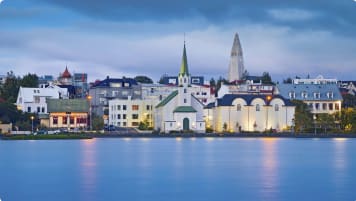Lunar landscapes and Geology in Iceland
Iceland has a fascinating place in the contemporary geologic record of Earth. But whilst the geology makes the landscape it is the people, the wildlife and the culture that attract many to visit. For Odyssey's small group package tour of Iceland for mature and senior travellers whether couples or a single traveller this is a great journey.
1 Jul 20 · 10 mins read
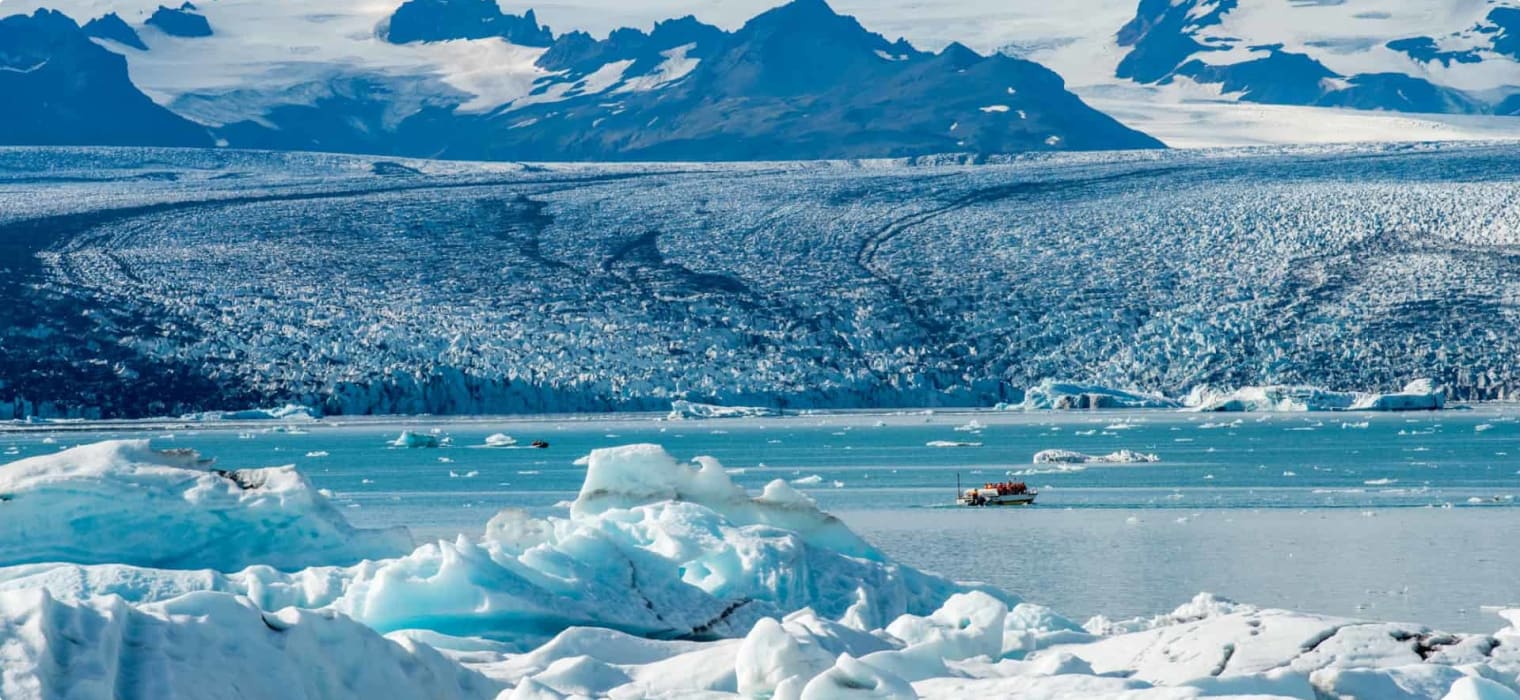
Iceland Landscape: Lunar Likeness and Geology
The strange, moon-like landscapes of Iceland inspire astronomers for the Northern light and the clear night skies, also stargazers and film buffs alike to pursue that Iceland tour. Others travel across the world for its stunning Blue Lagoon, and impressive volcanoes and Volcanic landscape and a massive glacier or two as well as the unique rift valley which drives lava flow from the volcanism beneath the surface defining so much of Icelandic geology that is seen in. But Iceland also has a people with proud cultural traditions and beliefs. It features distinctive farming techniques, interesting fauna, and rock formations that bear more than a trace of violent seismic events past.
Odyssey’s Iceland cultural and wilderness small group tour for mature travellers takes in all of these experiences and more. These are not Iceland geology tours but Iceland‘s geology does feature because it is an intergral part of Iceland‘s landscape. Cruise among icebergs, venture into a active volcano (conditions permitting!) and learn more about geologywith specialised lectures and museum visits. Meet the locals and sample traditional delicacies, if you are game.
Many people head straight to popular tourist route of The Golden Circle tour (Þingvellir National Park, the Geysir Geothermal Area, and Gullfoss waterfall), but the Odyssey Traveller small group package tour offers a more extensive tour for senior and mature travellers. Circle the country, taking in more of its impressive natural and man made phenomena, as recommended in this recent article from photographer and moon-enthusiast Robert Ormerod .
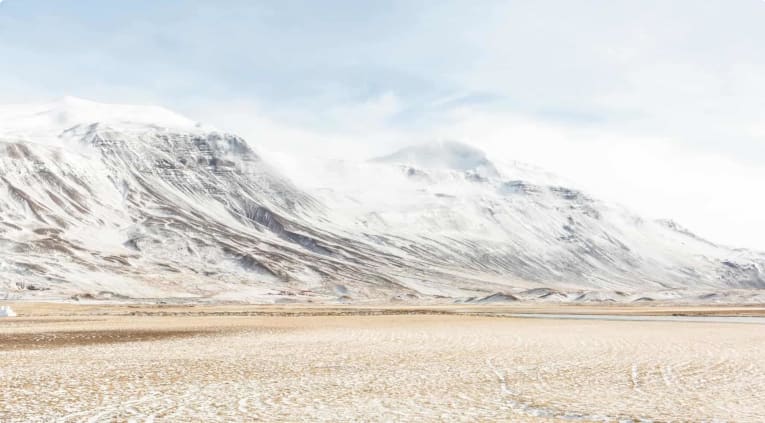
Small steps on the moon
Iceland‘s distinctive topography is the result of a history of tectonic movement along the rift valley a Volcano seam that emerges in Iceland and the associated volcanic eruption and lava flow. Its sparse, other-worldly feel has attracted the attention of Hollywood. Iceland has provided backdrops to films including Interstellar, Star Wars, Star Trek, Ridley Scott’s Prometheus and Batman Begins. For photographer Robert Ormerod , its similarity to the moon inspired his journey through the country, in pursuit of its most extra-terrestrial sites. These are both natural and man-made, as he also takes in Iceland‘s distinctive satellites and geothermal domes.
Ormerod details how Iceland was actually visited by Apollo astronauts in the late 1960s. They attended for training, though it was not the country’s moonscapes that drew them but its rich Icelandic geology, used to instruct them in selecting moon rocks. This history of association with outer space is set to be marked by the production of a replica lunar module. Produced in collaboration with the Smithsonian Institute, the first part of the module is displayed from October 2019 – just in time for the 50th anniversary of the moon landing. More information on the project can be found here.
Travellers to Iceland may be inspired to look closer at the geology of the earth, but they are equally impressed when looking upwards! Iceland is an ideal location for viewing the spectacular Northern Light each winter. So whilst these are not Iceland geology tours, the geology of iceland on a Iceland tour is always close through Volcanic activity and a volcanic landscape, geothermal water creating the hot springs, as well as massive glacier activity that also contributes to Iceland‘s landscape that does amaze!
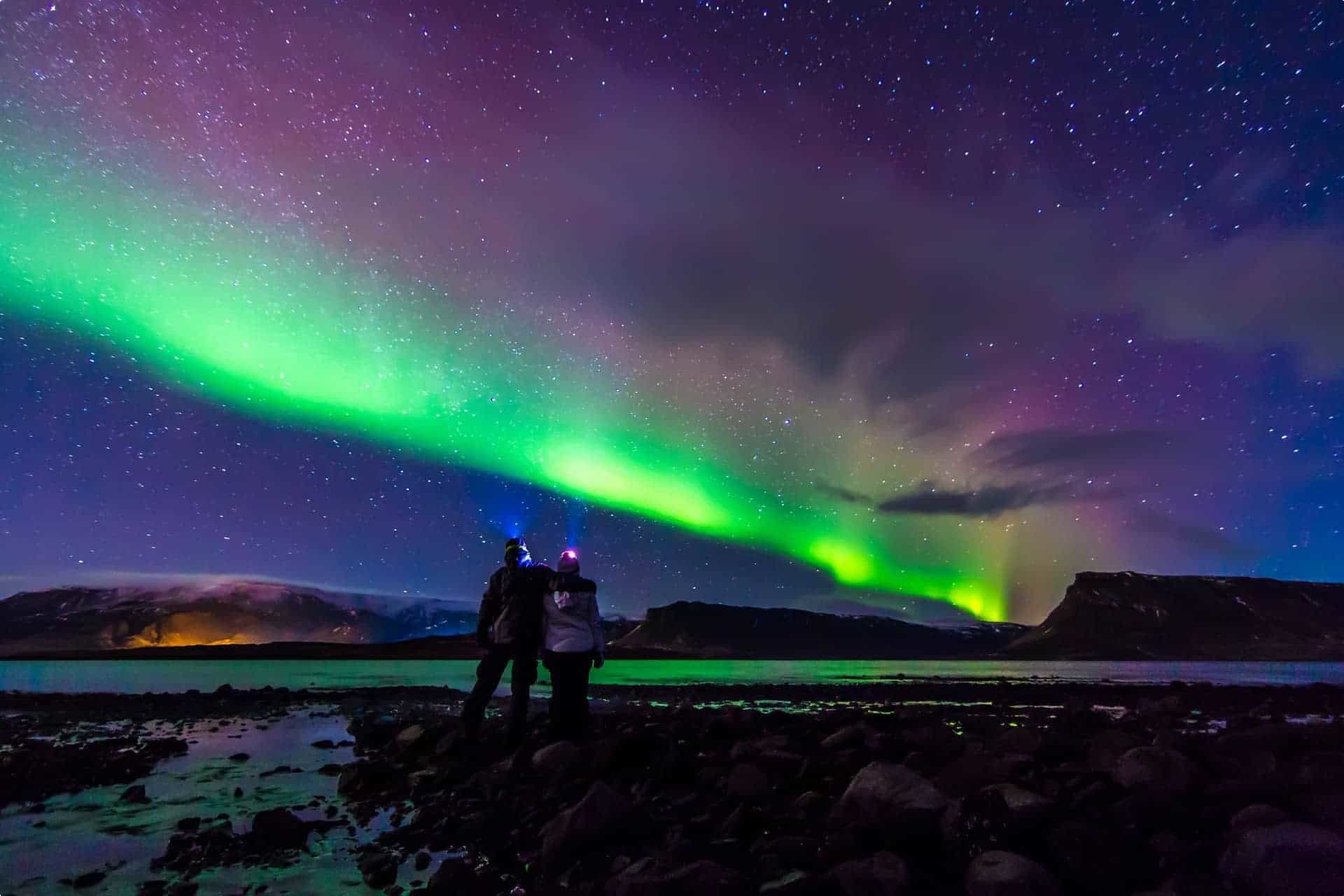
Stargazing: Iceland’s Aurora Borealis
An aurora is caused when gaseous particles from the earth’s atmosphere collide with particles from the sun’s atmosphere. These collisions occur at the magnetic poles of the earth – Aurora Borealis in the north, and Aurora Australis in the south. Opportunities for viewing the colourful display are limited at the southern pole because they are concentrated around Antarctica and the Indian Ocean. But the Northern Lights are far more accessible, and Iceland provides a great show – particularly from remote vantage points not obscured by light pollution. The collisions produce impressive visual displays. The colours are related to the kind of gas involved: the more common, yellow-green is produced by oxygen molecules; rare all-red displays are also oxygen but at higher altitudes; and blue or purplish colours are caused by nitrogen molecules.
The lights have been described as looking like an alien invasion. For some residents in the Northern regions of Iceland, on the other hand, they are such a common occurrence as to barely warrant mention!
Tips for photographing the Northern Lights
Like all of the world’s wonders, nothing can beat the real-life experience. But if you do seek to capture the stunning Northern Lights, a little forethought is recommended. Some people suggest a fast shutter speed, because the lights can exhibit lots of motion. But others prefer a long exposure and slow shutter speed due to the dark conditions. Best to be adaptable in order to respond to the light display itself. A shorter speed will produce a crisper image, but perhaps you seek to capture more of the overall impression. Be sure to familiarise yourself with your camera settings beforehand.
Other things to consider when taking photos are the features of the foreground, and potential light pollution. A tip: if you can clearly make out the stars, light pollution is less likely to be an issue. And finally, consider the time of year. Since summer in Iceland means 22 hours of light per day, winter is best to capture the phenomenon. Odyssey’s Iceland cultural and wilderness small group tour for mature travellers includes the Northern Lights for its September departure.
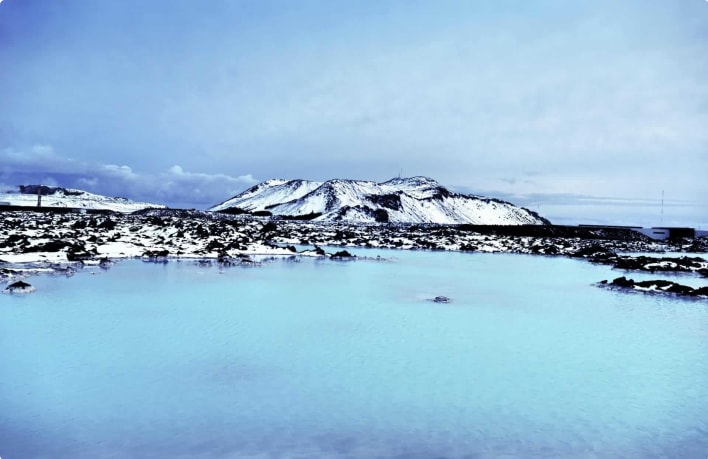
The Blue Lagoon
Travel in Iceland also promises moments of pure indulgence, like relaxing in the geothermal waters of the Blue Lagoon. A quintessential Icelandic experience, it is one of the 25 wonders of the world. The geothermal water originates at 2000 metres below sea level, where fresh water and seawater combine at extreme temperatures. A nearby geothermal power plant harnesses this natural resource via drilling, and it generates electricity and hot water for surrounding communities.
As the water travels upward toward the surface, it picks up minerals – and it is silica in particular that gives it the stunning blue colour. Interestingly though, if you take a cup of this water, it will actually appear milky white! The blue hue is produced by the reflection of the light. During summer, the lagoon has a greenish tinge owing to the algae that multiplies when exposed to sunlight. This algae is harmless when bathing, and in fact, the Blue Lagoon is celebrated as being very good for your skin.
Temperatures generally sit within a very comfortable 37-40C degree range (98-104F), but there are a couple of tips to remember while bathing. Remove your jewellery as the water’s composition may have adverse effects. It may also dry your hair, so use conditioner before and after entering the water. And skip the goggles – there’s no visibility under the water. Instead, just relax and enjoy this truly unique experience.
For more information on Iceland’s Blue Lagoon, click here.
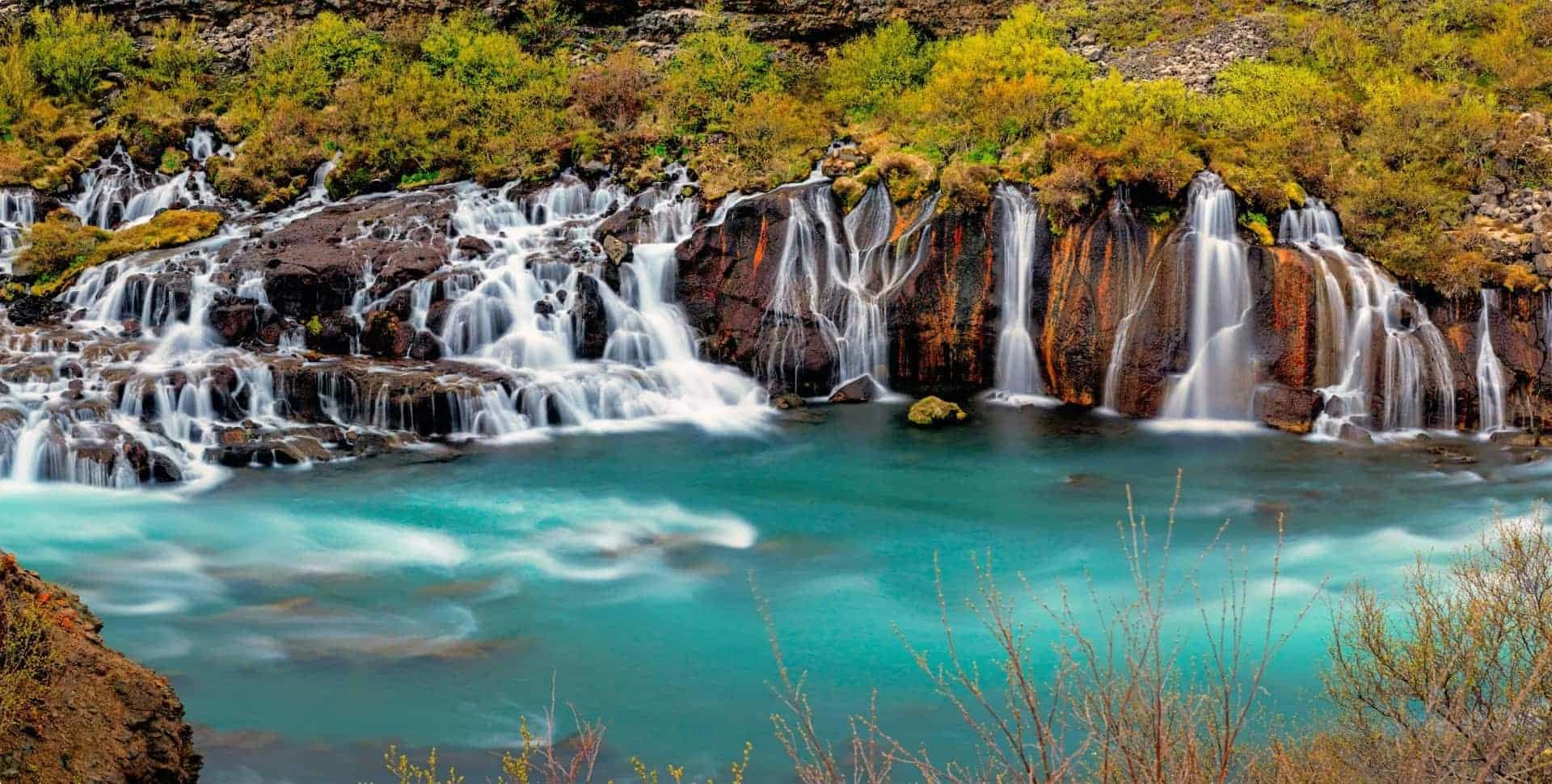
A history of geology in Iceland
The fascinating and unique landscape and topography of Iceland owes to the country’s active volcanoes and other geothermal phenomena including geysers. Glaciers cover approximately 11% of the country, with some overlying active volcanoes. Over thousands of years, seismic activity has seen the eruption of many volcanoes, the lava forging incredible landscapes.
This includes Hraunfosser Falls, which translates to lava waterfalls. A volcanic eruption beneath the glacier Langjökull sent out a vast lava field. Rivulets of cold, spring water seep through the porous lava over a distance of about 900 metres, and fall as tiny waterfalls and rapids into the Hvita River. Similar to the Blue Lagoon, the waters of these falls will be blue or milky white, depending on the light conditions. Seljalandsfoss waterfall is one of the best known waterfalls in Iceland with a height of 65m. It is known for being one of the few waterfalls you can walk behind. Skogafoss waterfall is a similar height and was formed after the coastline receded seaward, leaving the former sea cliffs in the original position. The waterfall is unique because the water comes directly from two glaciers, Eyjafjallajokull and Myrdalsjokull. The view from the top of the waterfall provides an amazing view of Iceland’s south coast.
One of Iceland’s crown jewels, the Jokulsarlon Glacier Lagoon borders the Vatnajokull National Park in southeastern Iceland. The national park is named after Vatnajokull, Europe’s largest glacier. The lagoon is naturally formed from water that has melted from the glacier and dramatic ice sculptures are created from icebergs that break away from the glacier. These sculptures wash up on the shore of the black-sand beach called Breiðamerkursandur and become a gallery of sorts. The glacier lagoon is the perfect place to seal-spot and although it looks like it is milennia old, it has only been around for about 80 years.
Other interesting geological sites include Landmannalaugar, with its many colored rhyolite mountains and obsidian lava field. Travellers here can also explore on foot the nearby Graenagil (Green Gorge), Brennisteinsalda (Sulfur hill) and Laugahraun (hot source lava).
Lake Myvatn is the site of phenomena including pseudo craters at Skutustadir, lava sculptures at Dimmuborgir (Dark Castles), and bubbling mud pools at Namaskard. There is also the explosive crater Viti (Hell) from the late 18th century.
Icelandic local Petra Sveinsdottir was a collector of stones, and welcomed visitors to view them. Over the course of her 80 years, she accumulated a staggering and varied collection. After her death in 2012, her home has remained open, and guests may explore her gardens and stones. Information on her collection, and interesting life, can be found here.
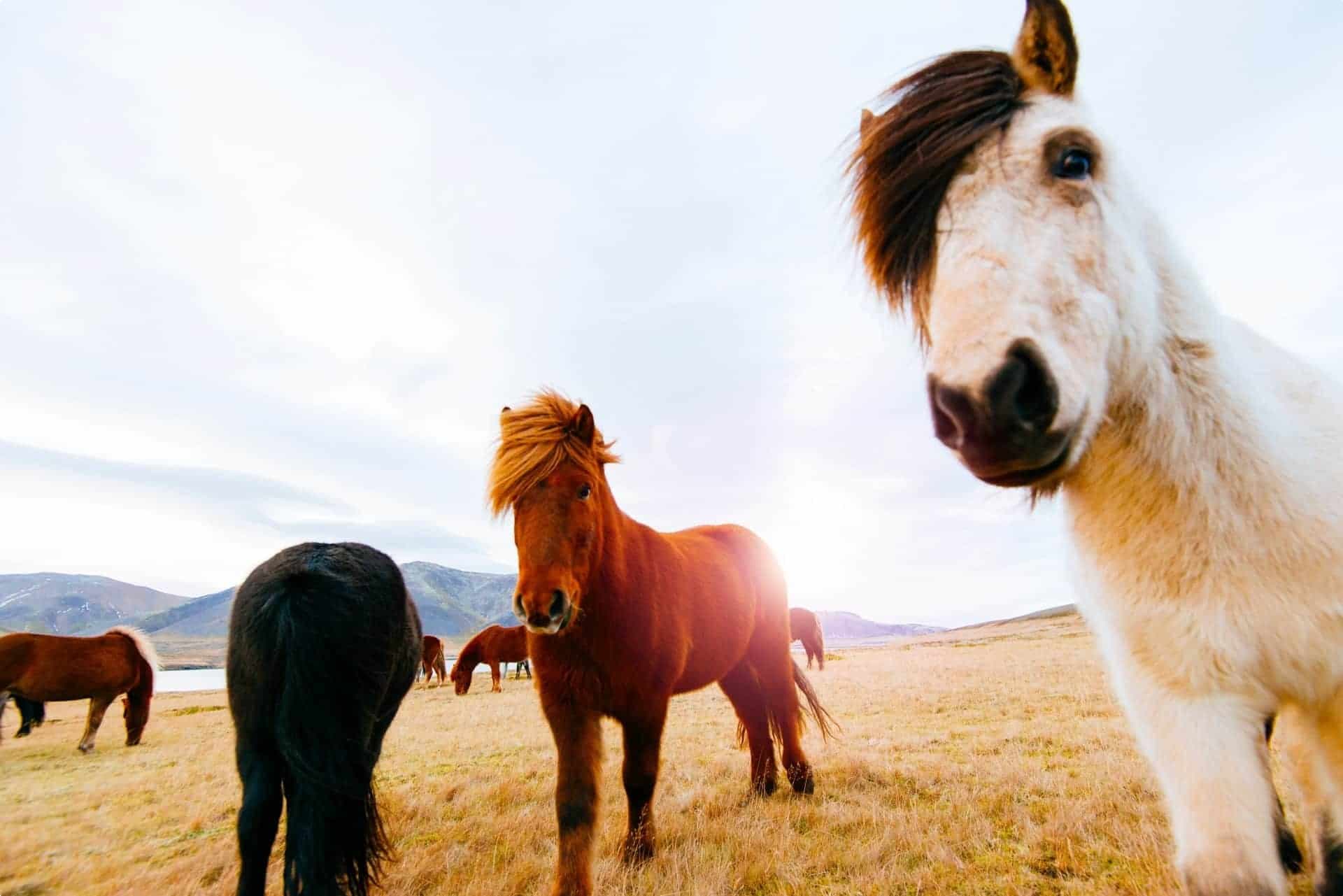
Iceland’s fascinating fauna
Whale watching opportunities are extensive in Iceland. The most common sightings are of the minke and humpback whales, but travellers may also get a glimpse of the pilot, sperm, fin, or unforgettable blue. Whales can be spotted in both summer and winter, though poor weather may impact the latter, particularly while there is just three hours of daylight. Still, it is well worth taking the chance for the opportunity to see these impressive beasts. Other animals may be spotted during these aquatic expeditions too, like dolphins and puffins.
Other fauna attracts the attention of travellers too. Lovers of horses may recognise the distinctive looking Icelandic horses. And if you are lucky, you may catch a glimpse of the cute Arctic fox, Iceland’s only native land mammal.
A country rich in birdlife
Iceland is also rich in birdlife, with over 300 different species sighted in the country to date. 75 species nest there regularly, but the larger count includes migratory birds – Iceland is a very important spot for geese and waders passing between Greenland and Canada. And various arctic birds spot in during the winter. If Iceland’s bird fauna is not exactly species-rich, it is very interesting and unique. There are very large populations of seabirds, waders and waterfowl. And travellers may be fortunate enough to spot a gyrfalcon – the national bird of Iceland. A bird of prey that nests in cliffs and rocks, larger females boasts an impressive wingspan of up to 5 feet!
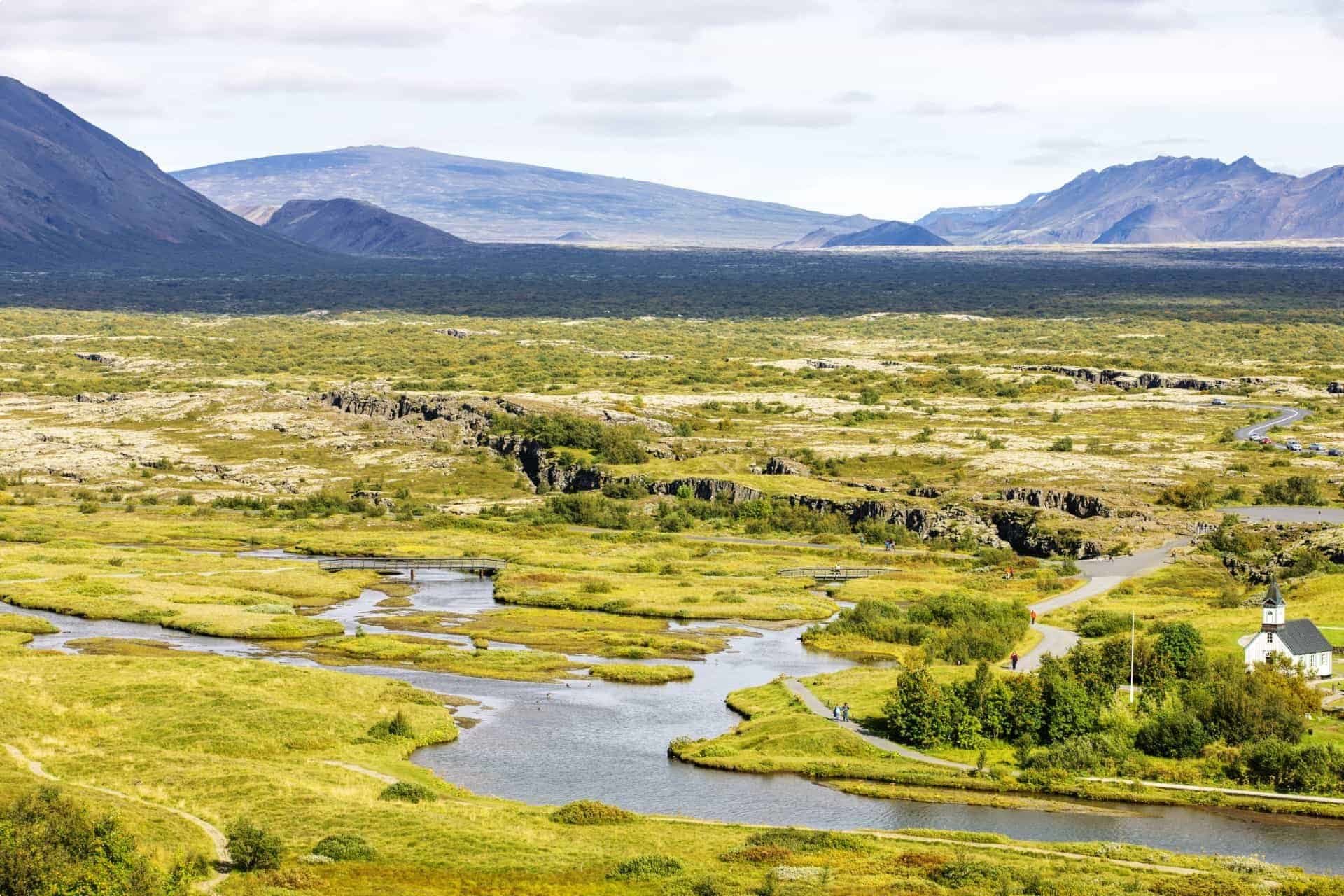
Thingvellir (Þingvellir) National Park
The people of Iceland are just as fascinating as its natural wonders, and have preserved traces of their earlier civilisation. Since 2004, the park is recognized as a UNESCO World Heritage Site.
Thingvellir National Park features the Althing: the site of an open-air assembly of Iceland’s parliament. It was established in 930 and continued to meet until 1798. The assembly met for two weeks a year to settle disputes and establish laws, which were viewed as a covenant between free men. The Althing has deep historical and symbolic associations for the people of Iceland. Fragments of around 50 booths persist, made from turf and stone. 10th century remains are thought to be buried beneath the ground. Also an agricultural site from the 18th and 19th centuries, the National Park provides evidence of historical husbandry techniques.
Traditional Icelandic cuisine
Icelandic cuisine is traditionally dominated by meat, especially lamb. This is attributed to the harsh environmental conditions that have persisted throughout history. Fish has also featured prominently because the country is surrounded by ocean. Flavours of traditional food typically reflect the method of its preservation – from pickling and drying, to curing or smoking.
During the Nordic month of Porri (late January to early February), many Islanders enjoy porramatur: a selection of traditional Icelandic food. Cured meat and fish products are sliced and served with dense rye bread, butter, and brennivin: a clear, unsweetened schnapps. This spread of dishes, prepared as a tribute to Icelandic culture, will typically include:
- hákarl: putrefied shark cubes
- sviðasulta: a brawn or “head cheese” made from the head of a sheep
- lundabaggi: sheep’s fat
- hrútspungar: pickled ram’s testicles
These days, the diet is becoming modernised and is increasingly closer to European in style. The consumption of vegetables is rising and the predominance of meat is in decline.
Travellers on the Odyssey small group tour of Iceland will visit a farm in Fridheimar to learn how fruit and vegetables are grown using geothermal energy, and during short daylight periods. They will also have the opportunity to meet a farmer in Bjarnarhofn, and can sample his shark meat – a likely polarising delicacy!
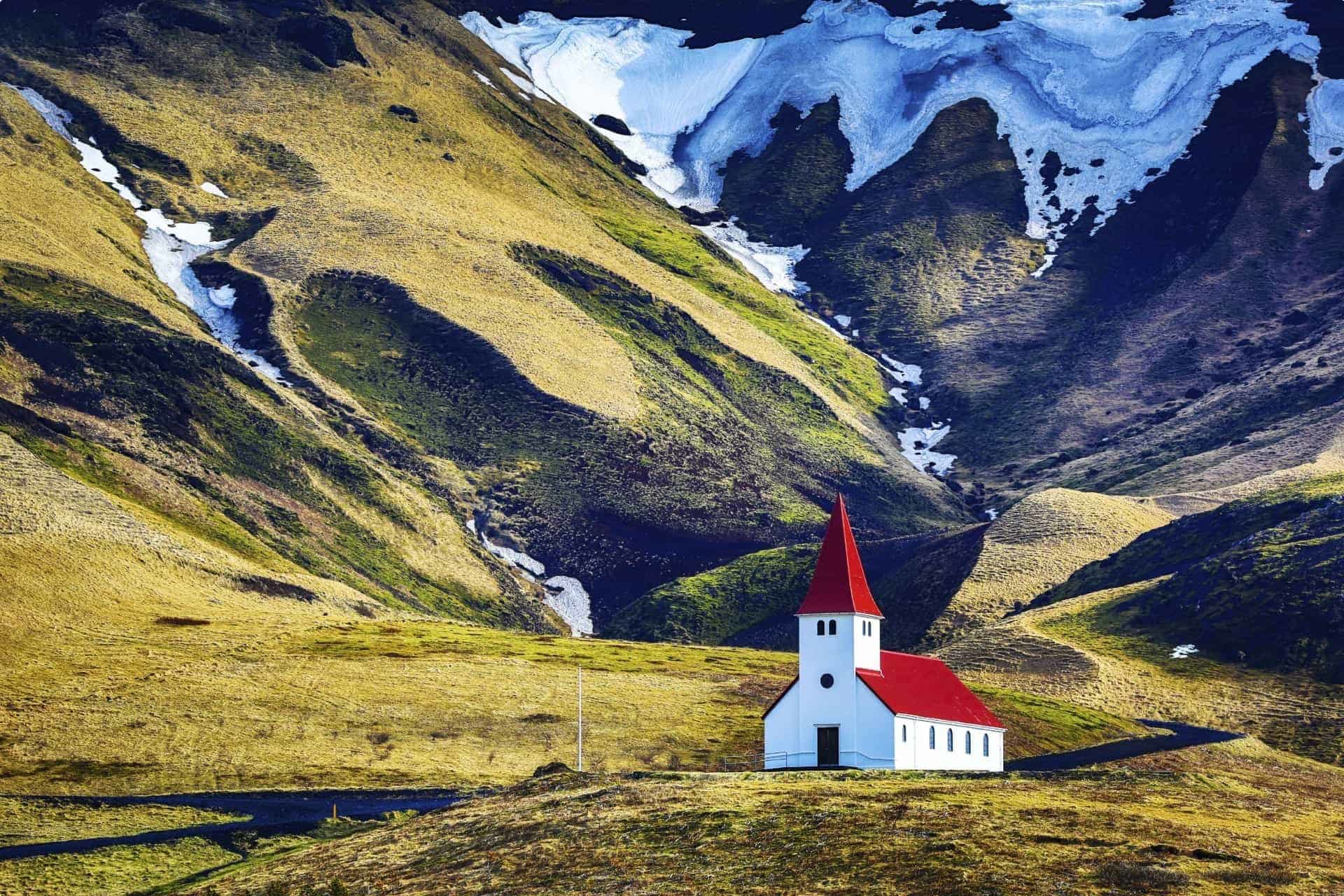
Small group tours of Iceland for mature travellers
For those inspired to behold the lunar landscapes and unique culture of Iceland, Odyssey offers a small group tour for mature and senior travellers. It takes travellers beyond the typical Golden Circle tourist route to provide more authentic experiences. With incredible geological formations, opportunities for spotting and learning about Iceland’s wildlife, and more interaction with local people, Odyssey tours are designed for those who seek to experience more.
For further information on how to sign up for Odyssey Traveller’s next guaranteed departure to Iceland, follow this link.
These links to articles published for Odyssey Travellers may also be of interest;
Thinking about taking small group tours
Discover Iceland; Spectacular geography and culture for mature travellers
This short youtube video by Thorarinn Jonsson may also be a useful reference point when considering travelling to see the landscapes and geology of Iceland
About Odyssey Traveller
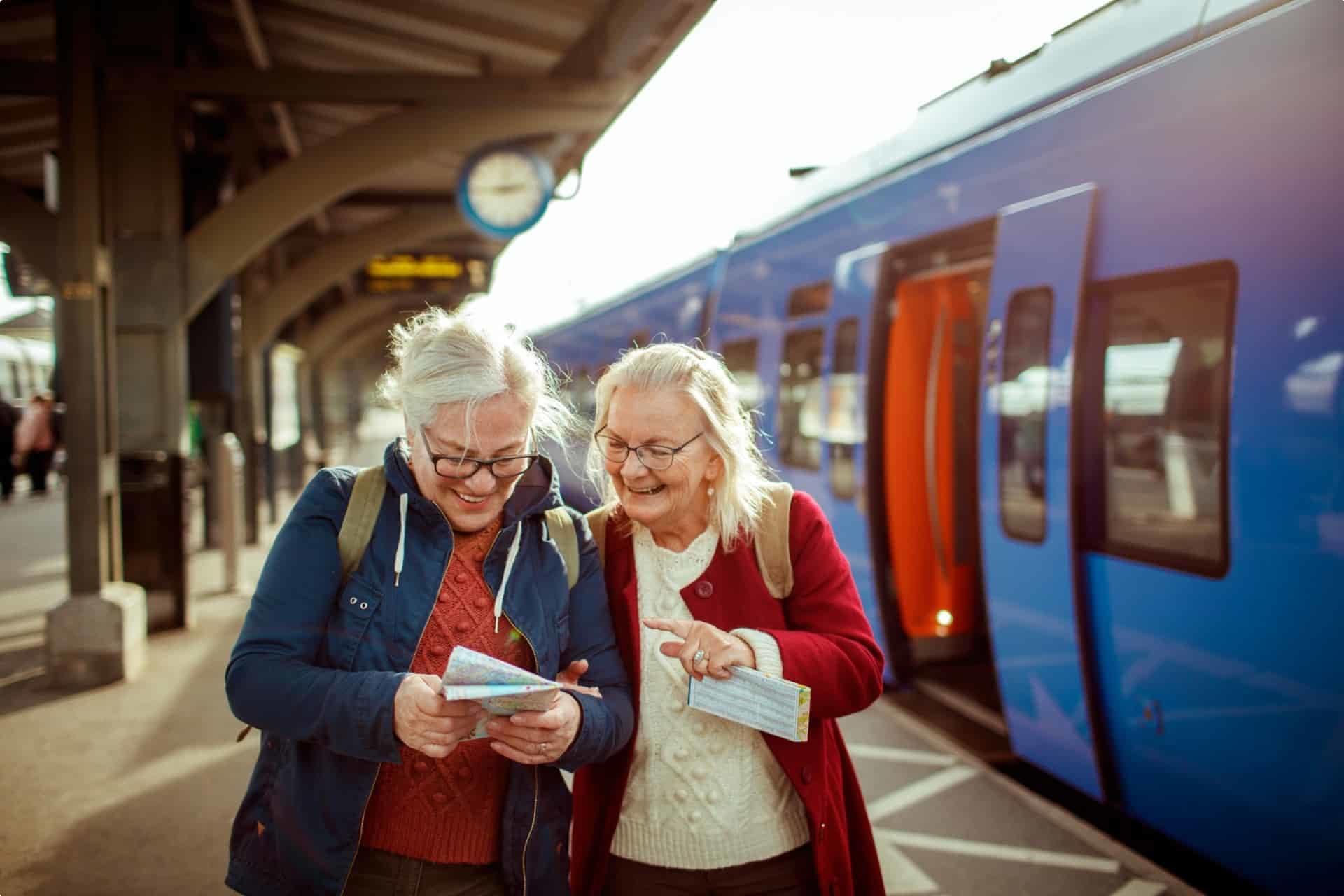
We specialise in educational small group tours for seniors, typically groups between six to 12 people from Australia, New Zealand, USA, Canada and Britain. Our maximum number of people on a tour is 18 mature aged travellers. Typically, our clients begin travelling with us from their mid 50’s onward. But be prepared to meet fellow travellers in their 80s and beyond! Both couples and solo travellers are very welcome on our tours. We have some 150 tours and offer 300 scheduled departures on offer each year. Odyssey has been offering this style of adventure and educational programs since 1983.
Odyssey Traveller is committed to charitable activities that support the environment and cultural development of Australian and New Zealand communities.
Odyssey Traveller scholarship for Australia & New Zealand University students.
We are also pleased to announce that since 2012, Odyssey has been awarding $10,000 Equity & Merit Cash Scholarships each year. We award scholarships on the basis of academic performance and demonstrated financial need. We award at least one scholarship per year. We’re supported through our educational travel programs, and your participation helps Odyssey achieve its goals. Students can apply for the scholarship by clicking on this link to find out more details.
Join our loyalty program when you join an international small group tour.
Every International small group tour taken typically contributes to your membership level in our Loyalty Program for regular travellers. Membership of the alumni starts when you choose to take your first international small group tour with Odyssey Traveller, discounts in tour pricing for direct bookings accrue from your third tour with Odyssey Traveller. To see the discounts and benefits of being a Bronze, Silver, Gold, and Diamond alumni member with us, please see this page.
For more information on Odyssey Traveller and our educational small group tours, visit and explore our website, and remember to visit these pages in particular:
- Terms and conditions applicable for booking an Odyssey Traveller tour.
- FAQ’s about Odyssey Traveller
Alternatively, please call or send an email.
Related Tours

17 days
May, SepIceland cultural and wilderness small group tour
Visiting Iceland
Our escorted tour gives guests an insight into the history of this Icelandic nation. Travelling as a small group, our daily itineraries explore the Jokulsarlon Glacier Lagoon and others, national parks and majestic waterfalls as we learn about Iceland’s natural heritage and its Viking past from experienced local guides. There is a single supplement for solo travellers.
From A$16,995 AUD
View Tour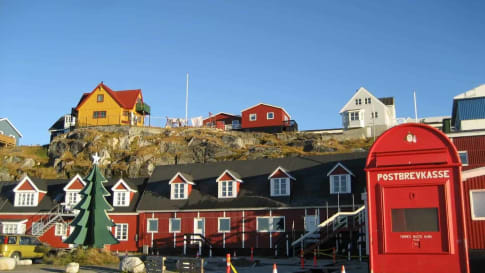
4 days
Sep, MayDiscover Greenland | Small Group Tour for Seniors
Visiting Greenland
Greenland is the largest island in the world, the majority of it lies above the Arctic Circle, and it is part of Denmark. Few places are quite so difficult to reach, we fly from Reykjavik to Nuuk. During this small group tour we have ensured that our travellers gets to this conversation-stopping land and, while we are there we obtain the most comprehensive overview of this vast landmass. We visit during the summer, experiencing the burst of seasonal flora, which caused the early voyagers to name it Greenland.
From A$5,950 AUD
View Tour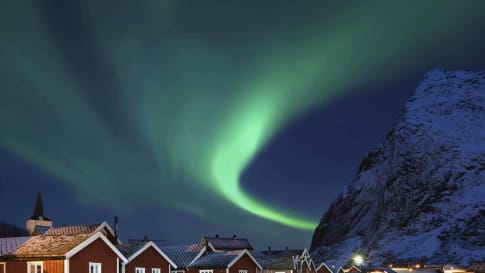
10 days
Oct, JanNorthern Lights Small Group tour | Visit Norway and Finland
Visiting Finland, Norway
Odyssey's small group tour following the Northern Lights allows you to experience serene snow-covered Arctic landscapes. Throughout our journey guides and specialists will outline the history of this stark region and the nature of the peoples who wrested their living from it. A unique opportunity to view this natural phenomenon travelling as part of a small group.
From A$8,750 AUD
View Tour
